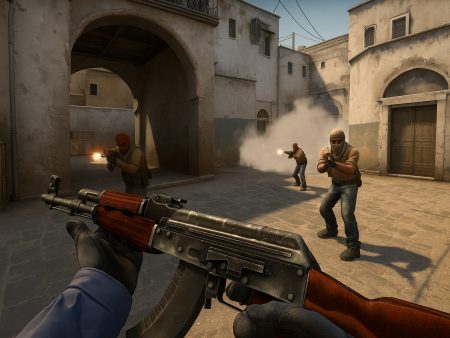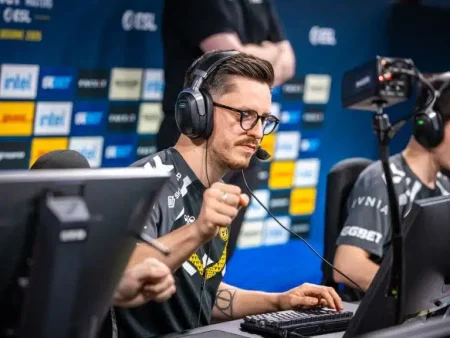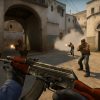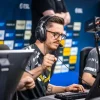Struggling to climb ranks in CS2? Discover proven strategies to improve aim, teamwork, game sense, and consistency. Master the meta and start ranking up faster today.
Ranking up in Counter-Strike 2 (CS2) isn’t just about fragging out and hoping for the best—it’s a complex mix of consistency, strategy, mechanics, and mindset. If you’re feeling stuck in your current rank and asking yourself, “Why can’t I break through to the next level?”, this guide is your blueprint. We’re breaking down everything from the ranking system to mental game, and giving you practical steps to start climbing the ladder consistently.
Let’s face it—everyone wants that shiny badge next to their name. But only the players willing to put in the work (and do it smartly) get there. So, grab your headset, warm up that aim trainer, and let’s dive into how you can start ranking up in CS2 the right way.
Understanding the CS2 Ranking System
How CS2 Ranks Work
In CS2, the competitive ranking system has seen major shifts from what you may have been used to in CS:GO. The ranking system is now driven by a more dynamic MMR (Matchmaking Rating) model. It factors in your win/loss ratio, performance within matches, and consistency over time.
You’ll notice that your rank doesn’t always change even after a great game. Why? Because ranks aren’t just about getting kills or MVP stars. They account for whether you contributed to the win, clutched key rounds, communicated effectively, and maintained consistency.
Currently, CS2 has map-specific ranks. That’s right—you’ll have different skill ratings for each map, which means you could be an “Ancient” specialist but average on “Mirage.” This change emphasizes the need to specialize and master maps individually rather than trying to be a jack-of-all-trades.
Understanding this is crucial. If you bounce between maps every game, you’re spreading your rank data thin, making it harder to climb consistently. Focus on one or two maps at a time, and build your rank steadily from there.
The Role of MMR in Rank Progression
Though Valve doesn’t openly display your MMR like other games (Valorant, for example), it’s definitely working in the background. The system tracks every round, not just the match outcome. That means even if you lose, but you perform well and contribute meaningfully, you can still gain hidden MMR and build toward the next rank.
What helps?
- Consistent round wins
- Positive K/D ratio with impact
- Utility usage (flashes, smokes, damage assists)
- Objective play (plants, defuses, trade kills)
Avoid going on long losing streaks—they tank your MMR. If you drop 3–4 games in a row, take a break. Regain focus before requeueing.
Differences Between CS:GO and CS2 Ranking
If you’re a CS:GO veteran, forget most of what you knew. CS2 has changed the meta. Map-specific ranks, tick rate improvements, and engine upgrades affect gameplay speed and accuracy. Smokes are volumetric now—they react to environment and gunfire. Flashbangs are more impactful. Every little thing influences performance, which ultimately feeds into your rank.
In CS:GO, you could grind Mirage over and over and carry that rank to every map. Not anymore. In CS2, specialization is rewarded. The faster you adapt to this new reality, the faster you’ll climb.
Building Solid Game Fundamentals
Mastering Crosshair Placement
Let’s talk about the bread and butter of every top CS2 player: crosshair placement. It’s the single most important skill you can develop, yet it’s shockingly underrated by low to mid-ranked players.
Crosshair placement means keeping your crosshair at head level, pre-aiming common angles, and minimizing unnecessary movement. You should never be surprised when an enemy peeks—you should already be aiming where they’re about to appear.
Here’s how you improve:
- Use bots to drill pre-aims and headshot height.
- Watch pros and copy how they clear angles.
- Review your demos and spot times you were aiming at the ground or walls.
Good crosshair placement means you’ll win more duels without even needing god-tier aim. It makes your aim feel snappier and more responsive because you’re always ready for the fight.
The Importance of Movement and Positioning
Movement and positioning are where most players plateau. In CS2, peeker’s advantage is real. If you’re moving while shooting, you’re losing 90% of your duels. Learn counter-strafing. Understand when to hold an angle vs. when to jiggle peek.
Positioning isn’t just about hiding in a corner or camping a bombsite. It’s about information control. Good positioning lets you:
- Avoid unnecessary fights
- Get multi-kill opportunities
- Support teammates with crossfires
- Delay enemy pushes with utility
Start asking yourself: “What can I see from this spot? What can the enemy see?” If your position gives away more than it gains, it’s a bad one.
Effective Communication and Teamplay
This is huge. CS2 is a team game, period. Solo carry moments are flashy, but consistent ranking happens when teams coordinate. Use your mic. Even if you’re shy—short, calm, clear callouts win games.
Good comms include:
- “One pushing cat with AWP”
- “I flashed mid, peek now”
- “Let’s rotate B, they stacked A”
Avoid:
- Screaming
- Complaining
- Over-calling when dead
If your teammates are tilted, you stay chill. Be the calming voice. Be the one dropping a strat like, “Hey, let’s full exec A with smokes and molly triple.” That alone can change the round outcome and, eventually, your rank.
Sharpening Your Aim
Aim Training Routines
Let’s be real—if your aim sucks, you’re not ranking up. You could have all the game sense in the world, but if you can’t hit the guy peeking you, it’s game over. That’s why aim training routines are your best friend if you’re serious about climbing in CS2.
A proper routine doesn’t need to take hours. You can get massive improvements from just 30–45 minutes of focused aim training daily. Here’s how you can break it down:
- Warm-Up with Bots (10 minutes) – Load up a bot map like “Aim Botz” and practice flicks, taps, and tracking. Don’t just spray—focus on one-taps and crosshair precision.
- Kovaak’s or Aim Lab (10–15 minutes) – These external aim trainers help build muscle memory, especially for flicks and tracking. CS2 is heavily flick-based, so this is gold.
- Deathmatch (15–20 minutes) – This is where things get spicy. Hop into a community deathmatch server (preferably HS-only or FFA) and go hard. Focus on target switching, micro-adjustments, and fast reactions.
Be intentional. Don’t just mindlessly shoot bots or run around in DM with music blasting. Every shot should be building muscle memory and improving your micro-flicks.
Best Aim Trainers for CS2
When it comes to software, Kovaak’s FPS Aim Trainer and Aim Lab are at the top of the list. They’re both customizable, track your performance over time, and simulate CS2 recoil patterns and movement. Within CS2 itself, maps like “Fast Aim/Reflex Training” or “Training_aim_csgo2” from the Steam Workshop are amazing.
And don’t forget Yprac Maps. These are arguably the best CS2-specific practice maps. They have built-in drills for reflex, spray control, peeking, and even prefire scenarios against bots in real-game positions.
Mix up your tools. Don’t rely on just one map or trainer. The variety will make you more adaptable in actual matches.
Sensitivity Settings and Mouse Optimization
Ah yes, the eternal question—“What sensitivity should I use?”
The truth? There’s no magic number. But most high-level CS2 players use a low to medium sensitivity (around 1.5 to 2.5 in-game with 400 DPI). Lower sens gives you better precision, especially for tracking and micro-adjustments.
Here’s how to dial in your setup:
- Find your eDPI (in-game sens × DPI). Stick between 600–1000.
- Use a large mousepad so you’re not restricted.
- Set Windows mouse settings to default (6/11).
- Turn off mouse acceleration—always.
Once you’ve found a setup that feels good, stick with it. Constantly changing your sensitivity ruins consistency. Your muscle memory needs time to lock in and develop.
Understanding Maps and Callouts
Practicing One Map at a Time
One of the biggest mistakes players make is jumping between too many maps. You’re trying to learn Dust2, Mirage, Inferno, Nuke, and Anubis all at once—and you end up mediocre on all of them.
The smarter move? Focus on mastering one or two maps first. Grind them hard. Learn every angle, callout, and lineup until you can play them blindfolded. When you specialize like this, your rank on those maps will skyrocket.
Start with a map like Mirage or Inferno—they’re beginner-friendly and have tons of resources online. Queue only those maps for a couple of weeks. Watch how fast your map-specific rank rises.
Learning Common Spots and Angles
Knowing the map layout is just the beginning. You need to understand where enemies hide, where they peek from, and where you’re exposed.
Let’s take Mirage for example:
- Connector, Top Mid, and Window are prime battle zones.
- You should know where to aim if someone’s peeking from Catwalk, hiding Under Balcony, or posted up with an AWP Ticket Booth.
Walk around maps in offline mode and clear every angle. Practice shouldering spots, checking corners, and prefiring predictable locations.
Also, learn how to hold angles properly. If you’re wide-swinging every time you peek, you’re giving your enemy a free kill. Use utility to isolate fights or bait out shots. Smart angle play often trumps raw aim.
Smoke, Flash, and Molotov Lineups
Utility is a game-changer in CS2. A well-placed smoke can cut off an entire site. A perfect molly can force out campers. But here’s the thing—most players never take the time to learn lineups.
Don’t be that guy tossing random smokes into the sky. Practice your nades. Set up custom games or use Yprac utility training maps.
Learn:
- Smokes for CT, Stairs, and Jungle on Mirage.
- Flashes to blind site defenders on Inferno.
- Molotovs to clear sandbags or triple boxes.
Once you’ve got a few lineups down, coordinate with your team. A full A-site exec with proper smokes and flashes makes you look like a pro team—and you’ll rack up rounds easily.
Strategy Over Raw Skill
Playing for the Objective
CS2 isn’t a deathmatch. The goal isn’t to get the most kills—it’s to win rounds. That means planting or defusing the bomb, saving when necessary, and playing for map control. Too many players focus on frags and ignore the bomb entirely.
Change your mindset:
- Prioritize site control over chasing kills.
- Understand when to play time instead of hunting.
- Support the bomb carrier with smokes and flashes.
- Watch the radar—if your teammate has site control on B, don’t keep fighting mid.
Playing for the objective makes you a smarter player and increases your impact. It also impresses the matchmaker, which rewards consistent contribution over flashy plays.
Reading the Enemy’s Strategy
Every round, the enemy is telling you a story—you just have to listen.
Do they rush B every round? Are they stacking A-site with 3 players? Do they save utility for retakes? Start reading patterns. If they do the same strat three rounds in a row, counter it with aggression, a setup, or a push from another angle.
This is where game sense comes in. Even if you’re not fragging out, reading the enemy can win you rounds. Call for stacks, flanks, or bait plays based on their habits.
Adapting Mid-Round for Success
The best teams adjust on the fly. Let’s say your A push got shut down. Do you regroup and hit B? Or fake B and go back A with a lurker? Great players stay calm and make mid-round decisions that shift the tide.
Keep talking to your team. Ask, “Should we regroup and go cat?” or “Let’s fake A, then go con to B.” Mid-round calls are where good players turn into leaders—and leaders climb ranks faster.
Smart Queueing for Competitive Matches
Solo vs. Premade Queue
Let’s settle the age-old debate—should you solo queue or play with friends?
If you have reliable teammates with good comms and similar skill levels, queueing as a premade is almost always better. It drastically reduces the randomness of your team composition, improves coordination, and gives you a mental edge. That said, if your premade includes a toxic rager or someone who doesn’t take the game seriously, you’re better off solo.
Solo queue can still work—many players climb this way—but it’s a grind. You have to be mentally strong, adaptable, and ready to take on the in-game leader (IGL) role more often. It teaches resilience, but be ready for inconsistency. One game you’ll get sharp, focused teammates; the next, it’s a circus.
Want a hybrid strategy? Duo queue with one solid teammate. It gives you a mini-squad advantage without risking full-stack matchmaking penalties or unbalanced ELOs.
Playing at Peak Hours
This might sound like a myth, but time of day affects match quality. Playing during off-peak hours (early mornings, late nights) can result in longer queues and more mismatched games. You’re more likely to run into smurfs, trolls, or unbalanced teams.
Instead, aim to play during:
- Evenings and weekends (6 PM – 11 PM local time)
- Active regional hours
- Post-tournament days (players inspired by pro play queue more)
During peak hours, you get faster matchmaking, more balanced games, and better server stability. That’s a win-win for ranking up.
Avoiding Tilt and Back-to-Back Losses
Tilt is a killer. One bad game turns into two, then five, and suddenly you’re five ranks lower and questioning your life choices. The solution? Set hard limits.
If you lose two games in a row—stop. Take a break. Walk away for 20 minutes, get a snack, touch grass—whatever it takes to reset. Don’t “revenge queue” thinking the next game will make up for it. That’s how losing streaks are born.
Also, know when to quit on a high note. If you’ve won two solid games and your focus is slipping, don’t push your luck. Momentum is great, but burnout kills your win rate.
Improving Communication and Leadership
Using a Mic Effectively
Having a mic isn’t optional in CS2—it’s essential. But just owning one isn’t enough. How you use it makes a huge difference.
Good mic usage means:
- Being clear, calm, and concise
- Avoiding open-mic background noise (push-to-talk is your best friend)
- Prioritizing callouts over commentary
For example, instead of saying, “Oh my god this guy is so annoying, he just keeps camping,” say, “AWPer holding car, don’t peek.” That’s the kind of info your team needs.
If you’re shy, don’t worry—you don’t need to give TED Talks. Simple callouts like “one ramp,” “flashing long,” or “rotate B” go a long way.
Leading Without Being Toxic
Leadership in CS2 isn’t about barking orders—it’s about guiding your team with confidence and respect. Nobody wants to follow a toxic mic-warrior. But a calm, strategic voice? That’s gold.
Here’s how to lead effectively:
- Suggest strats (“Let’s default and exec A on 50 seconds”)
- Keep morale up (“Nice try, we got this next round”)
- Ask questions instead of demanding (“Wanna push apps together?”)
Even if you’re not the best fragger, taking the initiative builds team trust. And when everyone’s on the same page? You win more.
Calling Out Plays and Rotations
Want to sound like a high-rank player? Start giving rotational info and mini-strats.
Say things like:
- “They pushed B apps twice—let’s punish mid this round.”
- “They’re weak on A, only one anchor—let’s do a fast exec with a smoke wall.”
- “We got a pick mid, rotate B now, I’ll lurk.”
Don’t overcall or micromanage every move, but paint a clear picture of what’s happening and suggest smart moves. Teams that rotate well and trade kills always outperform solo heroes trying to entry frag every round.
Reviewing Your Gameplay
Watching Demos for Mistakes
Most players never do this—and it’s why they stay stuck.
Watching your own demos is like studying game film. You’ll see all the stuff you missed in the moment—bad positioning, missed shots, missed timings, etc. And most importantly, you’ll start noticing patterns in your play.
Ask yourself while watching:
- Why did I die here?
- Could I have used utility better?
- Did I overpeek or get greedy?
Valve’s built-in demo system lets you rewind, slow down, and watch from different perspectives. Use it. If you had a bad game, don’t just queue again—analyze it. The fix might be simple.
Learning from Pro Player POVs
You don’t have to reinvent the wheel. Pros have already solved most of CS2’s puzzles. Watching their POVs teaches you:
- Optimal utility usage
- Map control strategies
- Clean movement and crosshair discipline
- When and how to peek
Don’t just watch highlight reels. Pull up full demos and study how they play early rounds, position for trades, or react to info.
Players like s1mple, ropz, and NiKo are great starting points. Each has a unique style, and by mixing what works for them into your own game, you evolve way faster.
Using Tools like ShadowPlay or OBS
If Valve’s demo system feels clunky, use tools like NVIDIA ShadowPlay, OBS, or Medal to record your matches.
With these tools, you can:
- Rewatch clutch moments
- Clip mistakes for review
- Create highlight reels (also helps with motivation)
Reviewing gameplay isn’t about beating yourself up—it’s about recognizing what you can improve. That’s how real progress happens.
Staying Consistent and Avoiding Burnout
Creating a Gaming Schedule
Consistency beats grind every time.
You don’t need to play 8 hours a day to rank up. In fact, that’s one of the fastest ways to burn out. Instead, create a schedule that fits your life and stick to it.
For example:
- 1 hour of aim training
- 1–2 comp matches per day
- 1 hour of demo review or strat learning per week
Treat CS2 like going to the gym. Small, focused sessions beat marathon grinds. Your brain and reflexes need rest to perform well.
Balancing Practice and Play
Don’t just play matches nonstop. Mix in practice time for utility, aim drills, and map reviews. It keeps your skills sharp and prevents you from reinforcing bad habits.
Here’s a good ratio:
- 70% playing matches
- 30% structured practice
If your aim feels off or your decisions are rushed, cut back on comp for a day and focus on fundamentals.
Recognizing When to Take Breaks
Mental fatigue leads to dumb decisions. If you’re getting tilted, snapping at teammates, or making the same mistakes over and over—it’s time for a break.
Signs you need to step away:
- Losing multiple games in a row
- Blaming teammates constantly
- Missing easy shots
Even a 15-minute walk can refresh your mind. Come back later with a clear head and start winning again.
Staying Updated with Meta and Patches
Following Patch Notes
Every few weeks, Valve drops updates that tweak weapons, maps, or game mechanics. Ignoring these is like trying to play chess without knowing how the pieces move. If you’re serious about ranking up in CS2, reading patch notes should be a part of your routine.
Patches can:
- Nerf or buff weapons (like changing AWP movement speed or AK spray patterns)
- Alter map geometry (adding boxes, removing cover)
- Adjust utility effectiveness (how far a flashbang blinds, for example)
Stay on top of these changes by following the official CS2 blog or patch note aggregators. Even small adjustments can dramatically change the meta—don’t be the guy still using old smokes that no longer land correctly.
Watching Pro Tournaments
Watching pro matches isn’t just entertainment—it’s education.
Tournaments like ESL, Blast Premier, and the CS Majors showcase meta-defining plays. You see how top-tier players rotate, bait, fake, trade, and clutch. Try to absorb the tactics they use:
- Default setups
- Mid-round calls
- Executions with layered utility
- Post-plant positioning
Watch with a purpose. Pause and ask yourself why a team chose a particular site, or how they set up crossfires. This analytical watching turns passive viewing into active learning.
Trying Out New Weapons or Changes
Sometimes a weapon gets buffed and no one realizes it’s meta-breaking until weeks later. For example, if the M4A1-S gets nerfed and the M4A4 becomes dominant again, adapting early gives you a huge advantage.
Experiment with:
- Shotguns on eco rounds
- Pistols like P250 or Five-Seven in force buys
- SMGs like MP9 for bonus rounds
You never know when the next meta-shifting strat or weapon combo will emerge.
Using the Right Gear
Best Monitors and Refresh Rates
Your gear matters more than you think. Playing on a 60Hz monitor is like trying to race in a tricycle. CS2 is a high-speed, reflex-driven game, and every millisecond counts.
At a minimum, aim for:
- 144Hz monitor (240Hz or higher is ideal for serious players)
- Low input lag and fast response time (1ms preferred)
Higher refresh rates let you see enemies faster and aim more accurately. If you’ve never tried 144Hz, the difference will blow your mind. It’s the easiest hardware upgrade to improve performance overnight.
Optimal Mouse and Keyboard Setup
You don’t need RGB everything. What matters is precision and reliability.
Look for a gaming mouse with:
- A reputable sensor (PixArt 3360 or better)
- Customizable DPI settings
- Light weight (under 80g preferred)
As for keyboards, mechanical switches (like Cherry MX Red or Brown) give you faster actuation and better durability. Combine it with a clean, clutter-free mousepad setup so you can aim without restrictions.
Audio Settings and Headset Choices
Sound is half the game in CS2. If you can’t hear footsteps, reloading, or utility being pulled, you’re playing with a blindfold on.
Use a headset with:
- Good stereo imaging (or virtual surround)
- Comfortable long-session wear
- Closed-back design to isolate game sounds
In-game, tweak your audio settings for clarity:
- Use Headphones profile
- Turn off music (except for 10-second bomb music)
- Set volume high enough to hear subtle sounds but not fatigue your ears
A good headset combined with sharp audio awareness can let you win fights before they even happen.
Ranking Up with the Right Mentality
Focusing on Self-Improvement Over Rank
Let’s get philosophical for a second.
The biggest reason players stay stuck? They chase rank instead of improvement. But CS2’s ranking system rewards consistency, not desperation. If you’re only playing to grind out wins, you’ll stress over every game. You’ll rage, tilt, and spiral.
Instead, ask yourself:
- “What did I learn this match?”
- “Did I position better?”
- “Did I clutch more 1v1s?”
Improvement is the real goal. When you get better, rank follows naturally. If you focus on climbing first, you often lose sight of the habits that actually make it happen.
Dealing with Losses Positively
Losses suck. No sugarcoating it. But how you respond matters.
Instead of flaming teammates or blaming bad luck, do this:
- Watch the demo—did you miss a critical shot? Bad rotate?
- Check your mood—were you playing tired, distracted, tilted?
- Take a short break and reset your mindset.
Growth comes from pain. Every lost round is a lesson. Embrace it, and you’ll become a smarter, more dangerous player.
Embracing the Learning Process
CS2 has a steep learning curve. Even the best players are still improving. The ones who keep climbing are the ones who stay curious and keep learning.
Watch guides, ask for feedback, join a Discord server, or just play with better teammates who push you. Keep feeding your brain and refining your skills.
The journey to Global Elite is long—but it’s worth every round.
Creating a Pre-Match Routine
Warming Up Before Queues
You wouldn’t start a gym session without stretching, right? Same logic applies here.
Warm-ups get your reflexes sharp and your aim locked in. Spend 15–20 minutes before queuing doing:
- Bot drills (Aim Botz, Yprac Aim Trainer)
- Crosshair placement routines
- Short deathmatch sessions
It’s not just about aim—it’s about entering the right mental space. You want to start your first match already in the zone, not warming up mid-game.
Mental Focus and Energy Boosters
CS2 is as much mental as it is mechanical. If your brain’s foggy, you’ll miss simple cues and overpeek like crazy.
Try this pre-game ritual:
- Drink water or green tea
- Close other apps and tabs
- Put on noise-canceling headphones
- Do a quick stretch or walk around
These small rituals signal your brain: It’s game time.
Avoiding Distractions During Games
Your environment matters. If your phone keeps buzzing, Discord’s popping off, or you’re alt-tabbing between rounds—you’re hurting your rank.
Before queueing:
- Silence your phone
- Close unnecessary apps
- Tell roommates/family you need 45 mins of focus
CS2 punishes split attention. One missed footstep or failed callout can lose the round. Lock in, and you’ll climb way faster.
Common Mistakes That Keep Players Stuck
Blaming Teammates Instead of Analyzing Your Play
This is the number one killer of progression. It’s easy to say, “My team sucks.” But the real growth comes when you ask, “What could I have done better?”
Even if your team underperforms, there’s always something you could’ve done:
- Flashed your entry more effectively
- Rotated earlier
- Saved instead of going for a hero play
Accountability is your superpower. Own your game, and you’ll start to notice huge gains.
Overconfidence and Ego Peeking
You hit a few sick shots—now you think you’re s1mple. So you start dry-peeking every angle, pushing through smokes, and refusing to trade. And then… you die. Repeatedly.
Confidence is good. Ego is not. CS2 punishes arrogance. Learn to:
- Use utility, even when you’re hot
- Wait for teammates instead of pushing alone
- Respect your opponents, especially in close games
Being smart wins more games than being flashy.
Playing Too Many Maps at Once
Map fatigue is real. Trying to learn Vertigo, Ancient, Mirage, and Anubis all in one week will leave your brain scrambled.
Stick to two maps max. Grind them until you know every callout, smoke lineup, and timing. Then expand. Specialization > generalization when it comes to climbing in CS2.
Tools and Resources to Help You Rank Up
CS2 Config Tweaks
Your autoexec and config settings can give you a smoother, more personalized experience. Tweak:
- Crosshair (use a clean, static one)
- Viewmodel (pull your gun closer for better vision)
- Rate settings (for smoother netcode)
Look up pro player configs for inspiration. Just don’t go overboard—start simple.
Useful Training Maps on Steam Workshop
Search for these:
- Aim Botz
- Yprac Practice Maps
- Recoil Master
- Training_aim_csgo2
These maps are designed for rapid improvement and simulate match-like scenarios.
YouTube Channels and Discord Communities
Level up faster by learning from others:
- Channels: n0thing, WarOwl, VooCSGO, HOUNGOUNGAGNE
- Communities: Reddit r/GlobalOffensive, CS2-specific Discords, FACEIT hubs
You’ll find demos, strategy guides, utility lineups, and fellow grinders looking to climb.
Conclusion
Ranking up in CS2 isn’t about shortcuts or hacks—it’s about commitment to steady improvement. From mastering aim and communication to understanding maps and meta, everything adds up. The most important thing is consistency. Show up, play smart, and focus on the long game.
Remember, every round is a lesson. Every mistake is feedback. And every win is a step closer to your next rank. Stick with it, and you’ll climb the ladder—one match at a time.
FAQs
How long does it take to rank up in CS2?
It varies widely, but with consistent play and improvement, you can rank up every few weeks. Avoid long losing streaks, and stay focused on performance.
What is the best map to grind for ranking up?
Mirage and Inferno are great starting points. They’re popular, well-balanced, and have tons of resources for learning utility and positioning.
Can I rank up playing solo queue only?
Yes, but it’s harder. You’ll need strong communication, adaptability, and leadership to carry inconsistent teams.
Why did I derank even after playing well?
Rank isn’t just about individual performance. If your team loses frequently, your MMR drops—even if you top frag. Try to influence rounds more strategically.
Does win/loss matter more than K/D in CS2 ranking?
Yes, winning rounds and matches is more important than just getting kills. Impactful plays, clutches, and utility usage weigh heavily.











